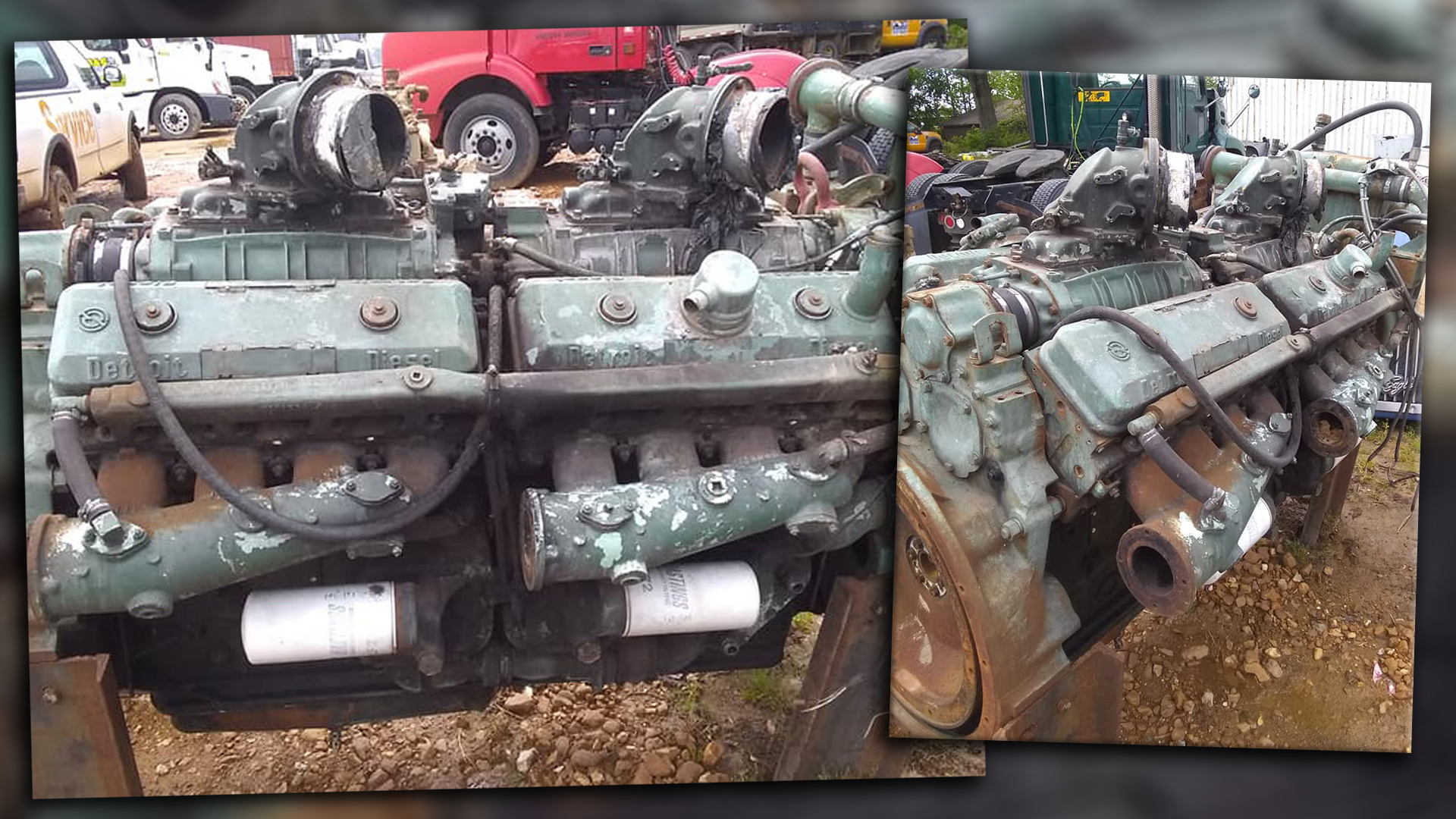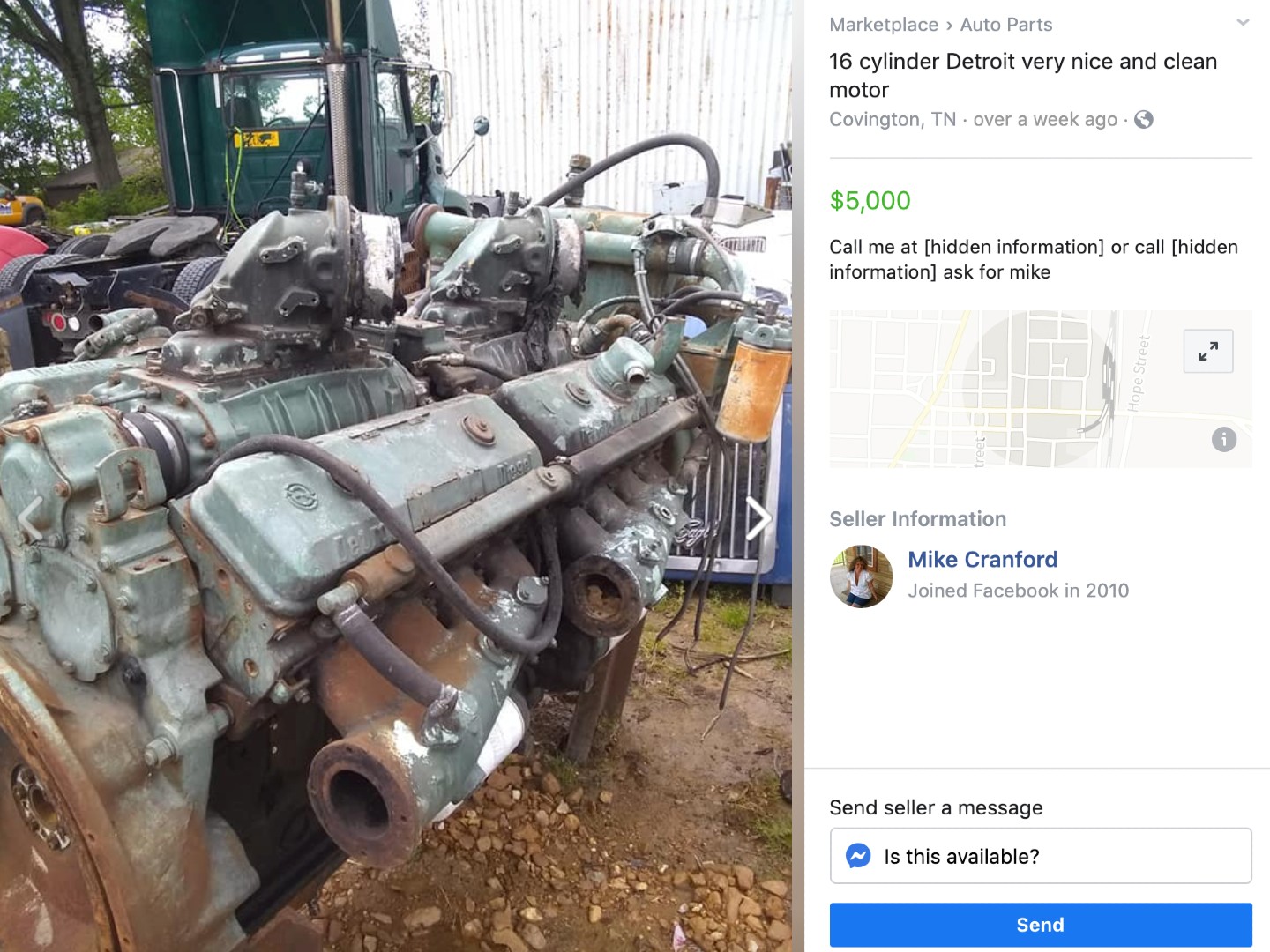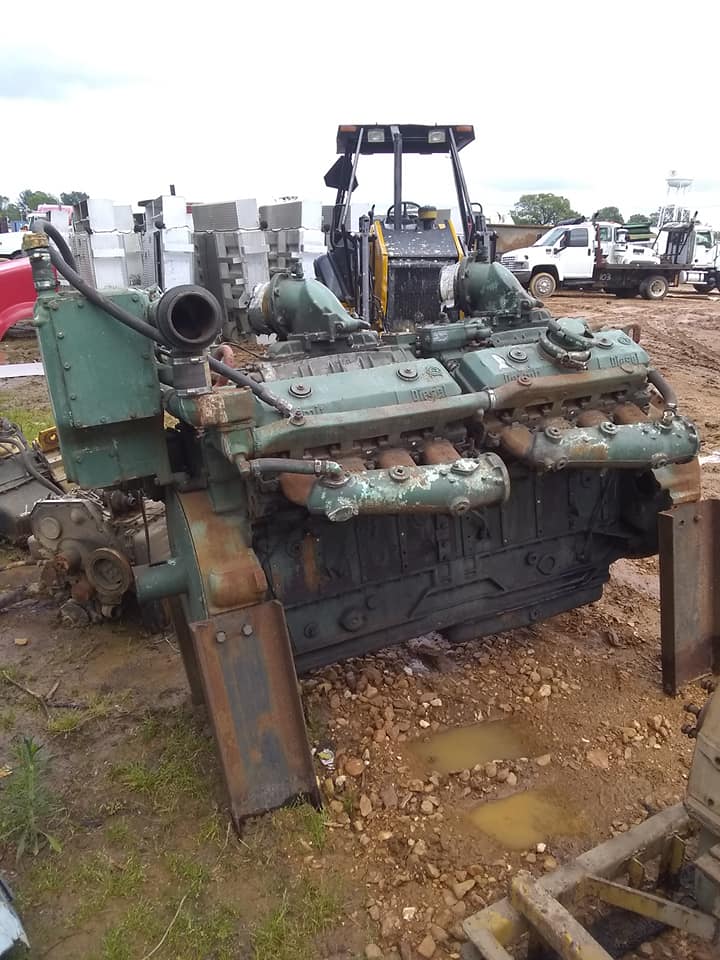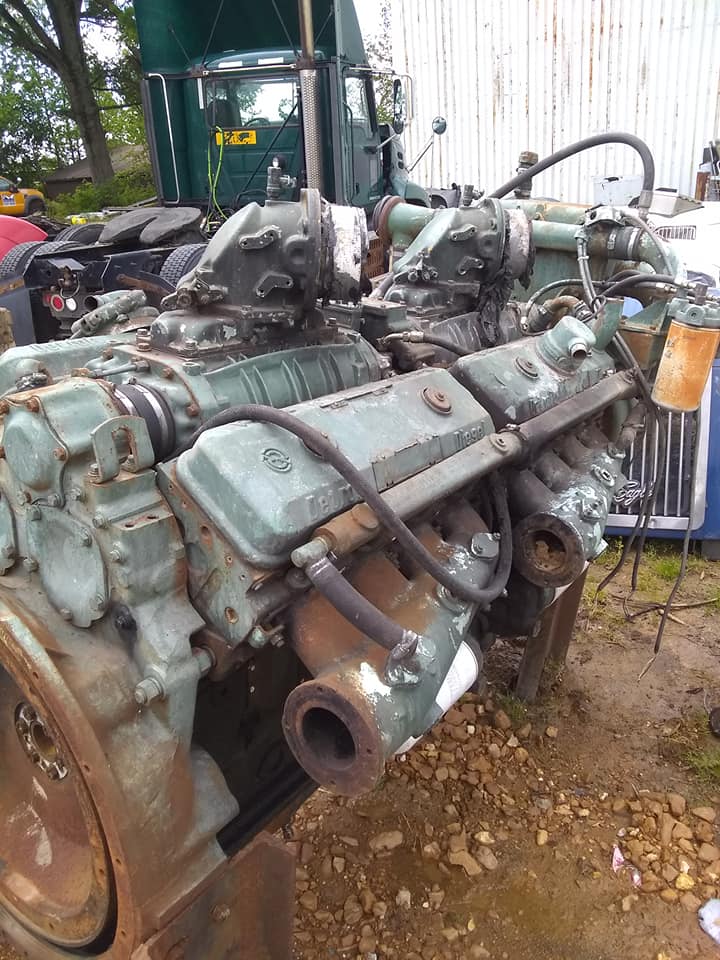

It’s a shame that Detroit Diesel no longer makes marvelous two-stroke engines, at least for novelty’s sake. Of course, they were loud, inefficient and decisively terrible for the environment, so there’s plenty of reason not to build them anymore. Regardless, you can still find them on the used market and select heavy-duty honey-holes are hiding real gems, like this 16V71 engine on Facebook marketplace that’s begging to be bought and swapped into something absurd.
Detroit Diesel used an easy-to-decipher naming system for its power plants that lists the number of cylinders first, their configuration second and the displacement of each cylinder last. As such, this is a V16 engine with 1,136 cubic inches of total displacement (16 x 71 = 1,136 quick mafs). Since the entire thing is made of cast iron, it also happens to weigh significantly more than a Dodge Challenger on its own.



Luckily, you’re rewarded for putting up with that much heft by the high-compression lump’s big-time power. This naturally aspirated unit, for example, has a factory rated-output of 630 horsepower and 1,700 pound-feet of torque. If it were a turbocharged “TA” engine from the factory, it’d make 760 hp and 2,200 pound-feet. The naturally aspirated and turbo versions boast compression ratios of 18.7:1 and 17.0:1, respectively.
You could easily fit a turbocharger to each cylinder bank, which would mean a quad-turbo setup since the 16V71 is made up of two V8s married at the crank. That would add some expenses to your bottom line, to be sure, as the seller is asking $5,000 for the engine already. Oh, and don’t forget the price of transport if you live anywhere other than Tennessee as this is no light load.
Detroit Diesel started building 71 Series engines in 1938, though it only offered them in an inline configuration at the time. It wasn’t until 1957 that the company would branch out and place the cylinders in a V, which is when larger units like the 12-, 16- and even 24-cylinder variants came along.
Like Detroit’s other two-stroke diesel engines, the 71 Series utilizes a roots-style intake which some argue is a form of supercharging, though for all intents and purposes it remains effectively naturally aspirated. This is because two-stroke engines that rely on compression ignition must have air forced into them one way or another, and that air is also used to drive out left-over exhaust gasses from each power stroke in a process known as “scavenging.”
There are videos of these behemoths in action all across YouTube, including an effort from Deboss Garage to take one from the junkyard and blow it to pieces.

It’s all good and fun entertainment, but if you’d rather see one being used as it’s intended, watch this startup clip of a 16V71-powered Hayes logging truck. Or check if your nearest chicken house is using it as a generator—I’ve seen that too.

Got a tip? Send us a note: tips@thedrive.com